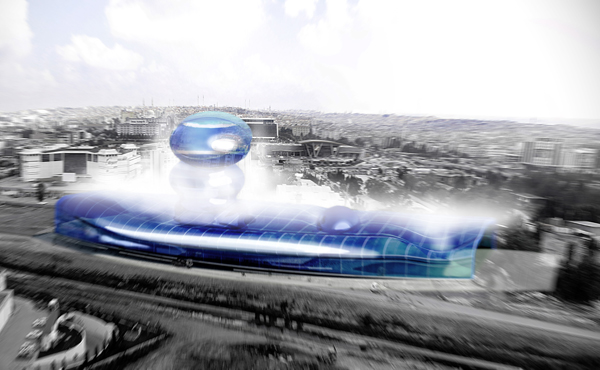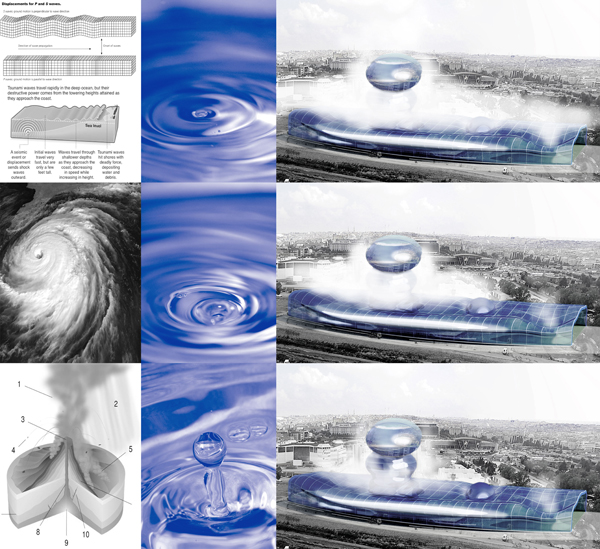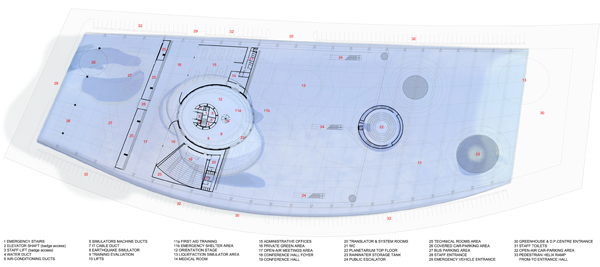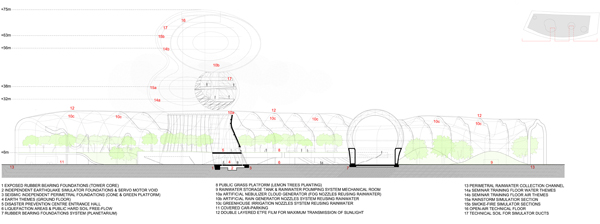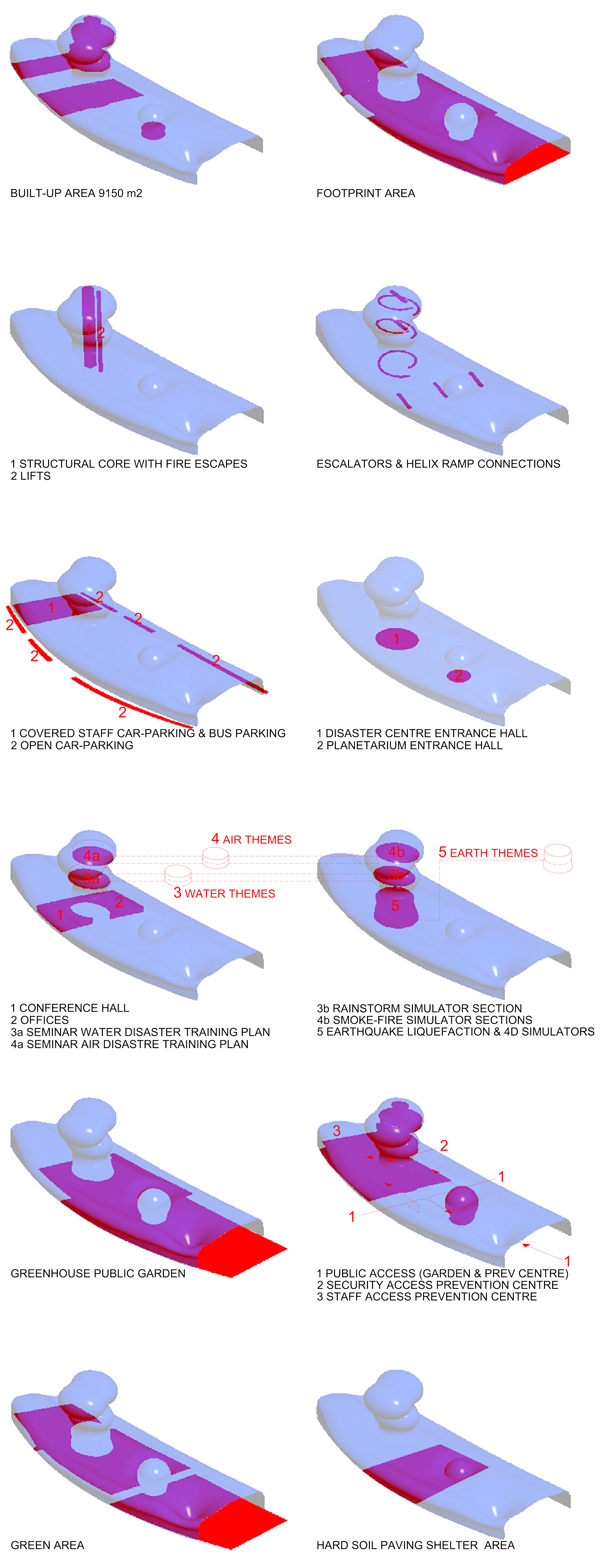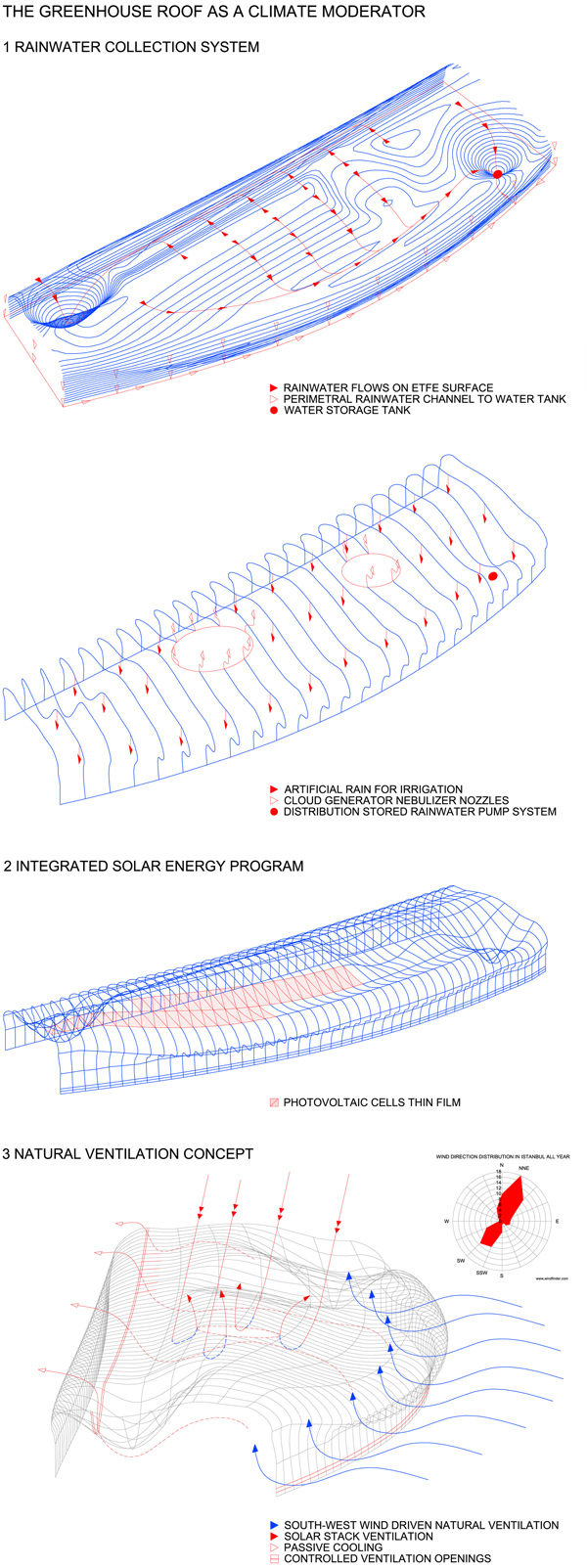The aim of the Centre designed by Vulmaro Zoffi is essentially to make citizens aware of and prepared for natural disasters using specific training rooms and simulation areas.
To express this intent in architectural forms the architect decided to use the metaphor of a falling raindrop. In fact, when catastrophes occur, the balance of a phenomenon seems broken by a very small force, so it’s possible to find in the micro-event of the falling raindrop some of the primitive geometric forms involved in macro-natural disasters.
A large platform inside the innovative complex, in the form of a broken fragment of a tectonic plate, provides access to the peaceful environment of the greenhouse. This effect results in the gradual merging of two opposing faces of nature: peace and upheaval. The ETFE space of the greenhouse also acts as an open public square surrounded by grass and trees, providing a proper dimension for socializing.
A central tower houses the exhibition spaces while on the top of the greenhouse a rainwater recycle system generates artificial rain for the irrigation system feeding the greenhouse inhabitants. On top of the complex a large fog-making system produces an artificial cloud that creates an overhanging ‘geodesic drop’. This oversized teardrop seems to rest uncomfortably in the air in a permanent static fall, serving as a warning of a possible impending calamity.
The four elements of earth, water, fire and air are vividly reflected in the tangible shapes of the building. The nature, with its chaos and beauty, seems almost to replace the architect in defining functional programs, in a way which unexpectedly educates visitors on natural disasters.

